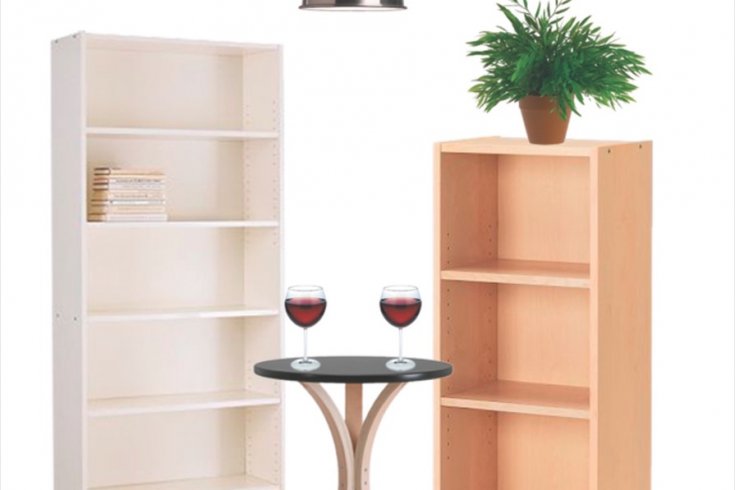
ikea Catalogue 2007: Love Your Home
by Ingvar Kamprad, 364 pp.
Writing in the New York Times in 1986, book critic Edwin J. Kenney alluded to a nascent literary genre known as Kmart realism. This new literature, marked by frequent references to brand names and an obsessive attention to surface detail, described the bleak geography of the discounted American underclass. The latest instalment in Ingvar Kamprad’s infamous literary franchise, filled as it is with what one might dub ikea realism, upgrades this genre. Kamprad is similarly obsessed with shiny surfaces, but his European élan results in stories of fresh, attainable futures rather than the ennui of dead-end suburbia and fast-food parking lots.
In his newest book, Kamprad returns readers to an ultramodern society where residents are described with a surfeit of umlauts (Tylösand, Värde, Näckten) and eight-digit identifying codes. This is an egalitarian civilization of democratic design, filled with affordable solutions for better living. If read conventionally, the plot is pedantic, resembling an overdetermined romantic set piece in a chick-lit novel: beginning in the kitchen, it quickly moves through the living room before reaching the bedroom. But the genius of Kamprad’s work is how it can be treated as a grown-up choose-your-own-adventure that allows readers to assemble their own narratives.
The first tome in this series, a Bildungsroöman driven less by personal trauma or societal discontentment than by a gentle but persistent desire to impose order upon the chaos of modern life, appeared in 1951 as Kamprad struggled to define and defend his aesthetic disposition. Through the years, his flat-packed prose has remained remarkably contemporary, always avoiding the excesses of each era and hewing to a clean, efficient style that surpasses even the taut sentences of a Carver or a Chandler.
Despite Kamprad’s predictability — or perhaps because of his consistency — his readers never seem to tire of his tropes, instead returning again and again for variations on a theme. Old favourites appear in many scenes, but in each new volume Kamprad introduces a stack of new, well-rounded characters into his fictive warehouse. If there is a protagonist lurking within this tome, it is Billy, a stable fellow, whom Kamprad describes as “a bookcase that doesn’t try to be anything other than a bookcase.” Still, the reader suspects that beneath birch-blond Billy’s thin veneer and sangfroid lurks a complex mix of motivations, resentments, and sawdust.
But Kamprad’s characters are a taciturn bunch. An experimental novelist, he dispenses with dialogue and a stable setting, and some of his shorter passages read like Dada poetry crossed with a classified ad: “pax barmen. $537. Oak effect foil finish. One mirror door. RA. w150xd60xh201cm.” Thus, for lasting insights, one must turn to the book’s themes: mythologies of transformation, the eroticization of furniture, and home organization as moral imperative. The only theorist, literary or otherwise, with an appropriate grasp of such psychodynamics — not to mention sufficient diacritics — is Slavoj Žižek.
Žižek demystifies the tension between knowledge and action — how our beliefs are made manifest not through what we say, but what we do. He argues that fantasy allows us to go through the motions of modern life, even when our knowledge of reality threatens to overwhelm or incapacitate us. Put bluntly, though we know very well that the parking lot will be full, the showroom crammed with arguing couples, the checkout lineup serpentine, and our purchases missing parts, we arrive each Saturday morning just the same, hoping this time will be different.
As is, by the book’s conclusion one is left wondering: what is a dream kitchen, exactly? And what does a clean, well-lighted room of one’s own have to do with literature? Kamprad is sophisticated enough to leave readers to find their own answers to these questions.
Will fans find this instalment compelling? With an initial print run of 175 million copies in 27 languages, Kamprad’s publisher certainly appears confident of yet another worldwide bestseller. While not everyone might embrace the new ikea realism Kamprad has been key in establishing, there is much to admire in this marketplace of ideas. Would that our mental furniture were so structured, our logic so aesthetically pleasing, and our goals so meticulously indexed.



